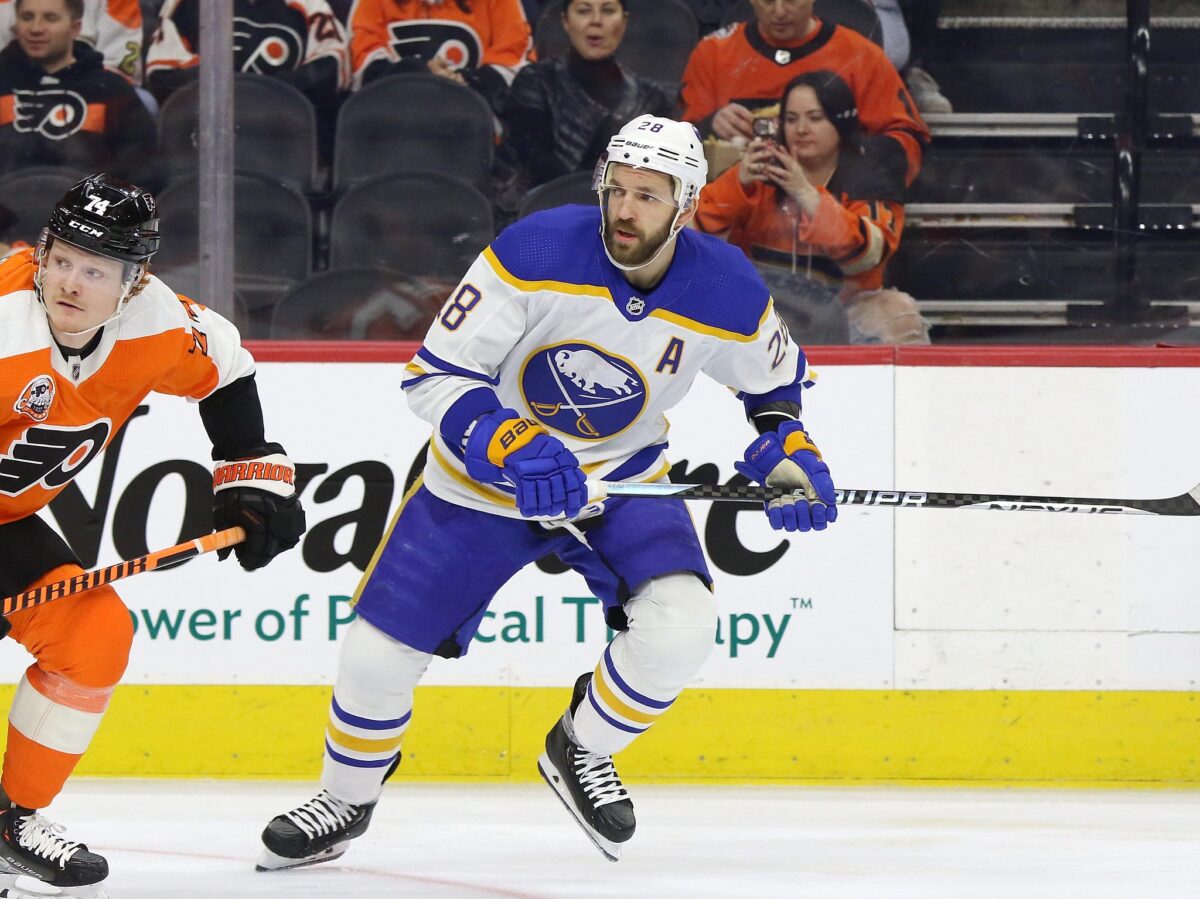The market for a bottom-six forward has evolved in recent years. Every season, organizations continue to emphasize constructing superior depth throughout the lineup. This team-building philosophy has led to more harm than good, causing fourth-line forwards to earn lengthy, dreadful contracts that teams regret down the line.
Related: Lightning Had an Unexpectedly Busy 2024 Draft Weekend
However, Julien BriseBois made a wise decision in free agency with one deal. The Tampa Bay Lightning’s forward depth looked abysmal on paper before July 1. BriseBois signed Cam Atkinson to a one-year deal to add a secondary scoring punch, but the most tactical move for the Lightning was offering Zemgus Girgensons a three-year contract. At an annual average value (AAV) of $850,000 per season, Girgensons’ deal looks like a bargain compared to the price tag on other bottom-six forwards around the NHL.
About Zemgus Girgensons
The 2012 14th overall selection is best known for his nationality around the league. Girgensons is one out of five active Latvian-born players in the NHL. The veteran offers versatility to the lineup and can play center or left wing. Furthermore, he even appeared in the 2015 NHL All-Star Game to represent the Buffalo Sabres. His best season to date came during the 2014-15 campaign, where he notched a career-best 15 goals and 30 points in 61 games. Outside this outlier season, he typically records 15-20 points with notable defensive results.

Corey Sznajder from AllThreeZones historically ranks Girgensons in the upper echelon of zone-exit and forechecking microstats amongst forwards every year. For the first time in his career, Girgensons will put on a different jersey and play under improved systems and coaching. His new contract grades well compared to deals in recent years for players just like him.
Recent Contracts That Make Girgensons’ Deal Look Like a Bargain
Yakov Trenin
Another bottom-six forward who signed a new deal this summer, Yakov Trenin, joined the Minnesota Wild for the next four years at an AAV of $3.5 million per season. While Trenin will improve the center depth in Minnesota, this contract is a hefty overpayment, especially compared to Girgensons’ new deal.
The physical forward provides a similar impact to Girgensons. He is solid defensively and produces identical point rates to the Latvian forward. Over the past three seasons, Girgensons recorded 1.15 points per 60 (P/60) and better primary point rates compared to Trenin’s 1.13 points per 60 (P/60). In short, while both players can be hounds on the forecheck and post solid defensive results, Trenin will make $2.65 million more than Girgeonsons.
Barclay Goodrow
Once a part of the Lightning’s Stanley Cup runs, Barclay Goodrow signed with the New York Rangers to add a veteran presence to a young locker room. The Rangers awarded Goodrow a six-year contract with an AAV of $3.641 million per season. This deal received backlash from fans and the media since the day Goodrow inked the paper. A fourth-line, penalty kill forward making north of $3.5 million per season limited New York at the trade deadline for the past two seasons.
Luckily for the Rangers, the San Jose Sharks claimed Goodrow off waivers to add a veteran for a rebuilding team to reach the cap floor. While Goodrow was slightly more productive than Girgensons and Trenin in recent years with 1.31 points per 60 (P/60), his contract displays that salary cap space is the most valuable asset in the NHL. The Rangers could have found a player like Girgensons with similar offensive production while saving almost $3 million in cap space.
David Kampf
The Toronto Maple Leafs have a parallel roster construction to the Lightning, a team with three or four star forwards who eat a large bulk of the salary cap space, plus a true number one defenseman. The only major difference is the money spent between the pipes. In short, both Toronto and Tampa Bay especially can’t afford to hand out massive deals to bottom-six forwards like candy. However, the Maple Leafs did not apply this strategy when they signed David Kampf to a four-year deal for $2.4 million per season.
Another player with an identical archetype to Girgensons, Kampf is efficient on the forecheck and exiting the zone. However, he’s not much more than a bottom-six defensive forward with a burst of speed to his game. His 1.21 points per 60 (P/60) over the past three seasons are slightly better than Girgensons offensive production, but his high cap hit doesn’t make that an advantage.
Closing Thoughts
Ultimately, salary cap space is the most under-appreciated and valuable asset in an NHL team’s front office. With cap space, teams can weaponize money in any way possible. Potentially a signing or trade for a player at any position. While the Girgensons’ deal isn’t a home run by any means, it is underrated when placed in context with the contracts players of his caliber are gifted every year.
